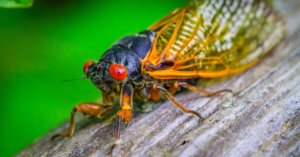Anacostia River on Life Support Following DC Initiative
By Chris Carey
“Filthy” was the sole word one former member of the Catholic University crew team used to describe the Anacostia River, which is undergoing a $400,000 last-ditch cleanup effort by the city, with the help of 35,000 mussels and some brave volunteers this fall.
Following hopeful results from a pilot program, DC pledged $400,000 to the Anacostia Watershed Society this past August, who will reintroduce mussels to the highly polluted waterway. These freshwater mollusks, who act as natural filters, will be placed throughout the river at various critical points along the course of the Anacostia.
This pledge is the latest in a nearly 15-year effort to purify the Anacostia due to a federal consent decree in 2005. These such decrees craft a working relationship between the Federal government and localities based on a need for change, such as the dire condition of the Anacostia River.
Until recently, even the thought of introducing freshwater mussels into the Anacostia was considered impractical due to the high volume of pollutants that restrict freshwater life.
“The fact we are able to reintroduce them at all is a huge indicator we are making progress,” said Jeffrey Seltzer, a deputy director at the D.C. Department of Energy and Environment, to The Washington Post. “It’s a great investment, but it’s one piece of the puzzle.”
Mussels, through their natural methods of eating, growing, and reproducing, bring in and filter out gallons of water each day. They are capable of removing harmful bacteria such as E. Coli, as well as microplastics and other pollutants.
Similar projects have taken a national stage in recent years, such as the conservation efforts in the Delaware Estuary, miles north of the mouth of the Anacostia.
The Anacostia flows from Maryland into DC where it releases into the Potomac River. Catholic University’s crew team practices often on the Anacostia River. The river’s troubles with garbage and pollution do not go unnoticed for the team who uses the river every Monday through Friday while in season.
“There are large piles of trash right by where we dock, and the water looks like it has this dirty film over it,” said freshman team member Ian McCaw.
On its own, the river does not cover a wide swath of land; however, due to the Anacostia’s influence on surrounding ecosystems, as well as its flow into the Potomac and ultimately into the Atlantic Ocean, this restoration and purification project has received much interest and attention from the Anacostia Watershed Society, which has helped spearhead the ongoing work in the River.
The potential of this new initiative has not been lost on the public, as people have reacted hopefully to the prospect of a cleaner river as a result.
“Each mussel can filter between 10 and 20 gallons a day. Just [those] we are releasing this fall could filter 48 Olympic-size swimming pools a year,” Jorge Bogantes, a natural resources specialist with the Society, told The Post.
Over the next months and years, Catholic University students and members of the DC community alike will look to the future of the Anacostia, their hopes lying on the backs of 35,000 freshwater mussels.







